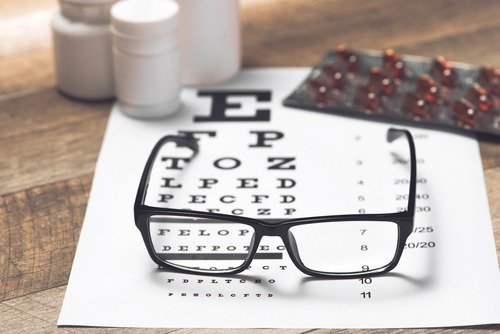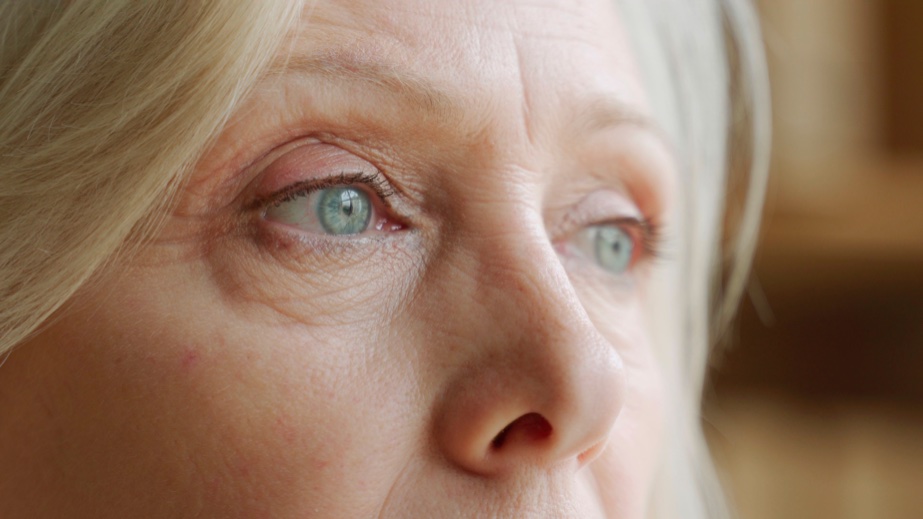AREDS and Genetic Testing
Age-Related Eye Disease Study vitamins for macular degeneration are commonly prescribed to patients by their eye doctors. The representatives from Arctic Medical Laboratories sheds some light on why this formula may not be safe for everyone with dry macular degeneration.
"For AMD patients with a specific genotype, the risk of developing wet AMD is tripled by taking supplemental zinc formulations (25 mg per day and higher), which increases the risk of vision loss."
Arctic Medical Laboratories
1. Briefly explain the AREDS and AREDS2 studies and their results regarding macular degeneration vitamins and age related macular degeneration (AMD) progression.
The Age-Related Eye Disease Study (AREDS) demonstrated that daily oral supplementation with antioxidant vitamins and minerals reduced the risk of developing advanced AMD by 25%. This is the only placebo controlled study of its kind, and that is important because a study without an adequate control group doesn’t really tell you very much.

The original Age-Related Eye Disease Study (AREDS) demonstrated that daily oral supplementation with antioxidant vitamins and minerals reduced the risk of developing advanced AMD by 25% and is the only placebo-controlled study of its kind. A placebo group is the "Gold Standard" for clinical research and is of importance because it enables the researchers to discern whether the treatment had any effect.
The AREDS2 study was designed to:
1) Test whether adding lutein+zeaxanthin (L+Z), DHA+EPA, or L+Z & DHA+EPA to the AREDS formulation further reduces the risk of progression to advanced AMD and
2) Test the effects of eliminating beta carotene and reducing zinc dose in the AREDS formulation. AREDS2 did not have a placebo (sugar pill) group, everyone got some form of an active therapy.

In this large, multicenter, clinical trial in people at high risk for progression to advanced AMD, daily supplementation with L+Z, DHA+EPA, or L+Z & DHA+ EP addition to the original AREDS formulation showed no statistically significant overall effect.
As a result of these 2 studies, the current recommended formulation for AMD patients is a combination of L, Z, Vitamins C & E, zinc & copper.
2. Are AREDS formulated eye vitamins beneficial to anyone who is interested in supporting their eye health?
No- these very high dose vitamin formulations should only be used when patients have dry AMD. The clinical studies only indicate a positive effect for patients who have large drusen (intermediate stage dry AMD), yet many physicians will recommend patients with early dry AMD start on them as well.
3. What role does zinc play in the prevention or progression of AMD?

Zinc is a powerful immune stimulant and, as shown in the original AREDS study, is also quite effective at reducing AMD progression to Advanced AMD. The efficacy of zinc alone was slightly less than the full AREDS formula, which is why zinc by itself is not recommended as a treatment for dry AMD.
4. Tell us about the published research involving genetic variants, high doses of zinc and the progression of dry AMD to wet AMD.
After initial competing studies from the National Eye Institute and Arctic Medical Labs, 3 independent publications (2016, 2018 & 2021) have confirmed there is an interaction between a patients’ genetic background and the AREDS/AREDS2 eye vitamins, as determined by patients progressing from dry AMD to wet AMD. Conclusive evidence in these genetically sensitive patients has not been conducted by the NEI, and may be very difficult to conduct, since such a study would ‘prove harm’ which is unethical.
The specific genetic variant profile the zinc sensitive patients have (2 CFH risk alleles, 0 ARMS2) represents about 15% of patients in the general population. For these patients, there is no ‘safe dose’ of zinc, as even the lower tested zinc dose (25/day) shows the same harm profile.
5. How can a person find out if they have one of the genetic variants?
The testing is proprietary, and only offered by Arctic Medical Labs. Their testing kits are found at many eye doctor’s offices, or can be purchased by the patient directly through the eyegen.net website.
There are 2 tests that are offered:
Vita Risk – Which a patient can do by themselves, or at the doctor’s office
Macula Risk – Can only be done at the doctor’s office
What is the difference?

-Vita Risk tells you what AMD genetic markers you have, and whether zinc is helpful or harmful to you
-Macula Risk tells you the same information, but also provides and individualized 2,5 & 10 year risk of progression to Advanced AMD. This added information is useful for your doctor so that they can stratify your risk level, and implement a monitoring plan that is in-line with your risk level.
Patients can get Direct to Consumer tests (through 23 and Me, Ancestry, etc), but these tests only look for a couple of AMD genetic markers, not a broad panel, and also do not test for the specific markers to determine if zinc is harmful to the patient if they’re taking eye vitamins.
6. Who should be tested and how is the testing (Macula Risk/Vita Risk) test performed?
Arctic only recommends that patients who have dry AMD are tested, as patients that do not yet have AMD should not take an AREDS/AREDS2 formula eye vitamin.
The tests are just simple cheek swabs that are sent back through the USPS. It takes about 5-6 weeks for the lab to have your results ready

7. How does one receive the test results and direction on how to proceed with AREDS vitamin supplementation?
If the patient has the test ordered by their eye physician and uses health insurance, then the test results are sent to that doctor. If the patient is purchasing the test themselves and doing the test at home, then the results will be sent to the patient.
In both cases, the company provides no charge genetic counselling, so patients should contact the counselor to discuss any questions they may have.
8. What is the cost of the Macula Risk test and does insurance or Medicare cover it?
The cost of the test depends on the method used to acquire the testing.
If the test is ordered by a physician, and the patient has an eligible AMD diagnosis, then the lab bills the patients’ medical insurance and accepts whatever payment is provided.

The most the lab wil bill a patient is $50. The test is fully covered by US Medicare
If the test is purchased by a patient from the lab through the eyegen.net website, then the cost of the test is $359, but includes a 6-month supply of the appropriate eye vitamins once the test results are available, and on-line consultation/support from both a physician and a company genetic counselor.
Find out more at Articdx.com
Go from AREDS Vitamins and Genes to Macular Degeneration Vitamins
Return to WebRN-MacularDegeneration.com Home
√ Prevention of Macular Degeneration?
√ Tips for Daily Living?
√ Food Suggestions for a Macular Degeneration Diet?
√ Ideas on Visual Aids to Maximize your Sight?
If you said "yes" to any of the above, sign up for the monthly Macular Degeneration News.

